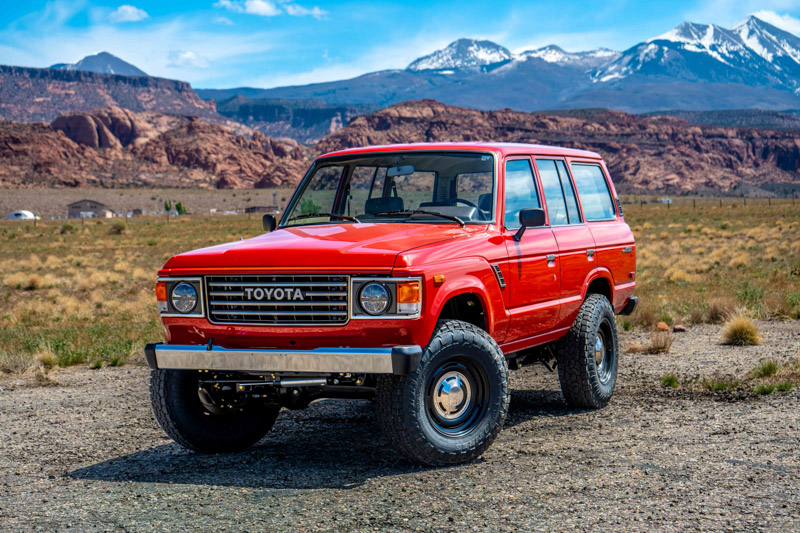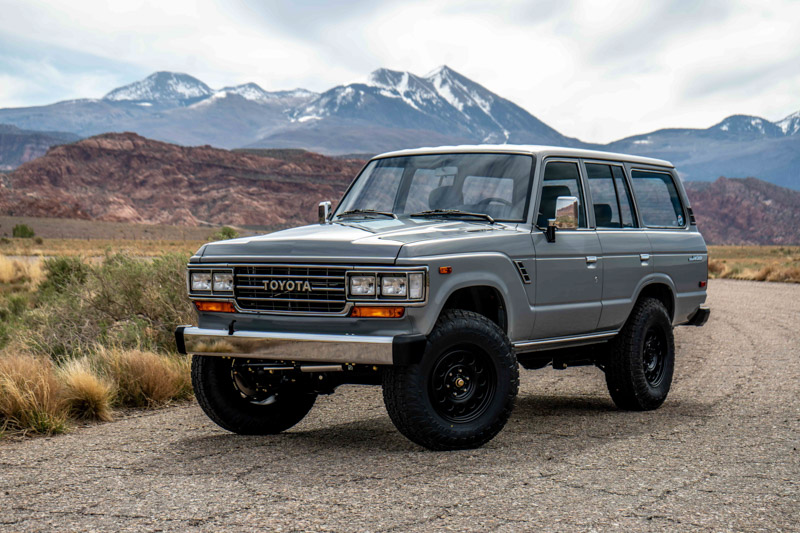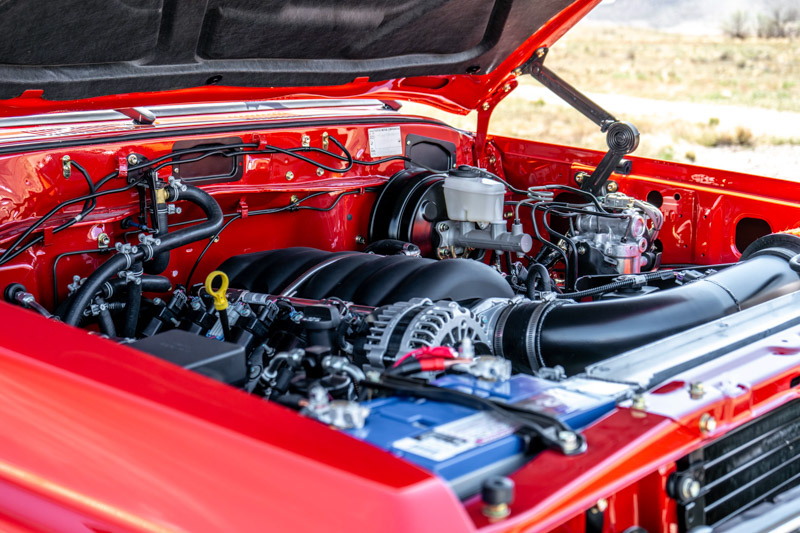For those of you who follow us, you have seen quite a few 60 series Land Cruiser resto-mods built on 80 series Land Cruiser chassis come out of the shop in the last couple of years. They are no doubt popular, but why? And is there anything about them that we don’t like? Read on to find out!
First of all, the 60 series Land Cruiser, built by Toyota for the US market from 1981 through 1987, is the favorite model Land Cruiser for many. It retains a classic style but offers the functionality of a durable and reliable drive train, four doors, seating for 5, good working heat and air conditioning, and a relatively pleasant driving experience. The 80 series replaced the 60 in 1991, and it featured numerous technical upgrades, including improvements to the chassis. The most significant difference was the linked, coil-sprung suspension (retaining a live axle), as well as improved steering and brakes, all of which have extensive aftermarket support and are easily upgradeable.
Even though most would say the 80 series is a great looking truck, it doesn’t look like something from the 80s and doesn’t quite have the look of a classic four-wheel-drive, at least not to me. Don’t hate me, but with their giant radius corners and bulbous shape, they remind me of, and I often refer to them as, a baked potato on wheels. Still, the improvements in driveability, both on and off-road, are light-years ahead of their leaf-sprung predecessor. So why not combine them?
That’s what we do, and the process is relatively simple. First, we strip an 80 series down to a bare rolling chassis. Then, all the original body mounts are removed, and the frame is ground smooth. Next, we shorten the chassis to match the wheelbase of the 60 series. We have designed all-new body mounts in CAD to simulate OEM styling, and these are fabricated and welded to the frame to accept the 60-series body. After the body is in place, the engine and transmission can be mounted. This part of the build is fabrication intense, and there are many small and large things that we custom build. These include bumpers and mounts, steering linkage, other drivetrain related items, and a custom 40+ gallon fuel tank because neither the 60 nr 80 series fuel tank will work.
After that, it’s just the normal restoration process, which involves 1,500 to 2,500 hours of meticulous disassembly, restoration, custom mechanical work, and reassembly. The finished product is night and day different than a normal FJ60 or FJ62. The stance is amazing. It’s better on road and off-road, it stops and steers better, and because of the extra width, the wheel choices are nearly limitless.
Are there any downsides to this conversion? I can think of only one. It does generate a lot of waste. We are disassembling a complete vehicle to obtain the 80-series chassis, which takes a Land Cruiser off the road. Now, of course, we aren’t using pristine examples of the 80 series as donors, but no matter what, one less Land Cruiser is out there when we are done. That, and 80-series bodies are piling up around our shop! So far, I don’t feel bad about it, but we will see in a few years as we finish more of these.
For now, you can expect to see a lot more of this style build coming out of our shop. There are several of these builds scheduled, and we generate new build sheets and estimates for similar projects every week.
Please enjoy the photos of two of our most recently completed 60/80 builds here!

The Ultimate Sleeper
OEM looks in a high-performance package. This FJ60 on an 80 series chassis definitely turns heads.

1988 FJ62 / 80 Series Chassis
No Compromises. The Ultimate FJ62 Resto-mod. LS3 / 6L80E / FZJ80 Chassis.
